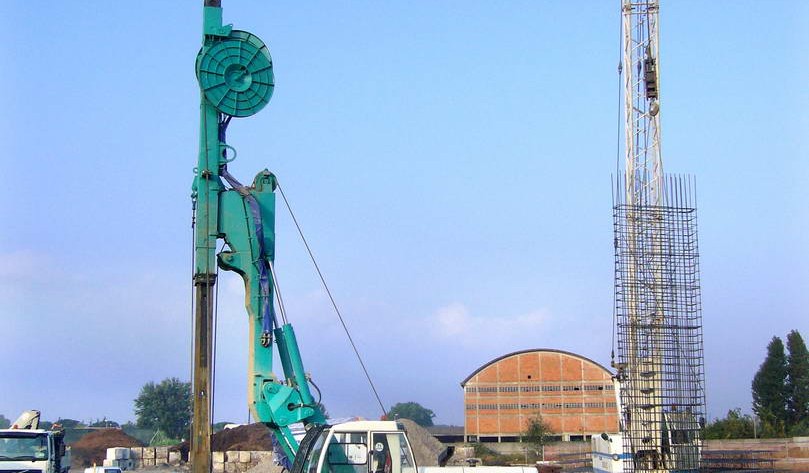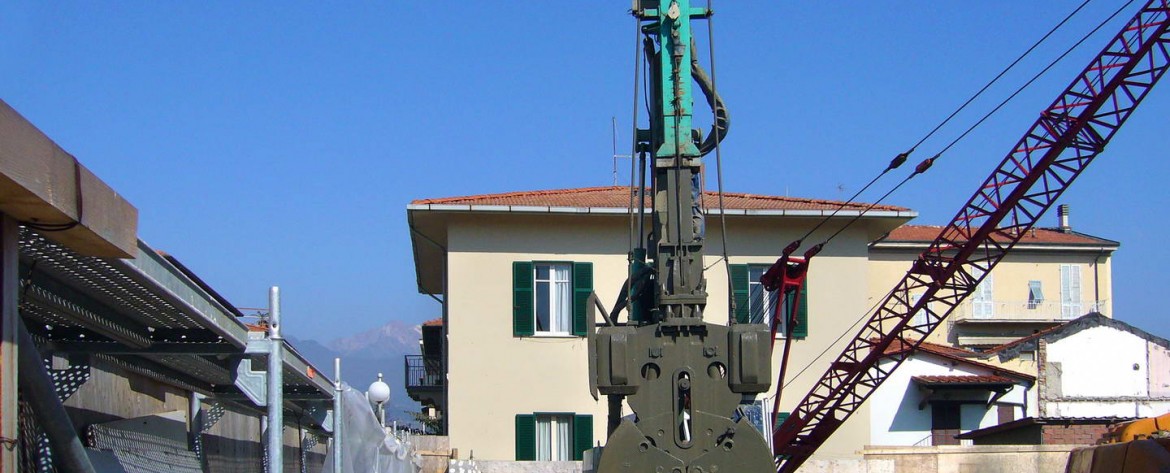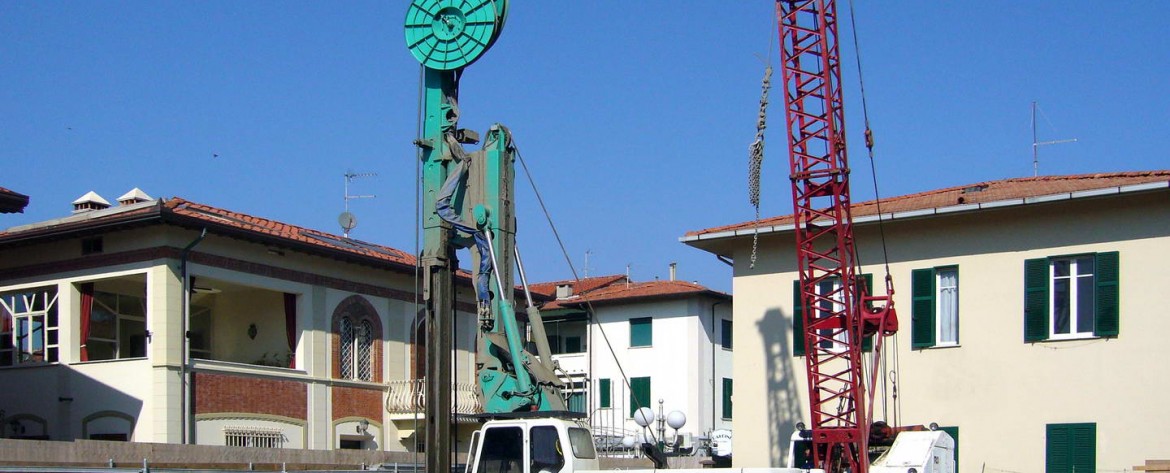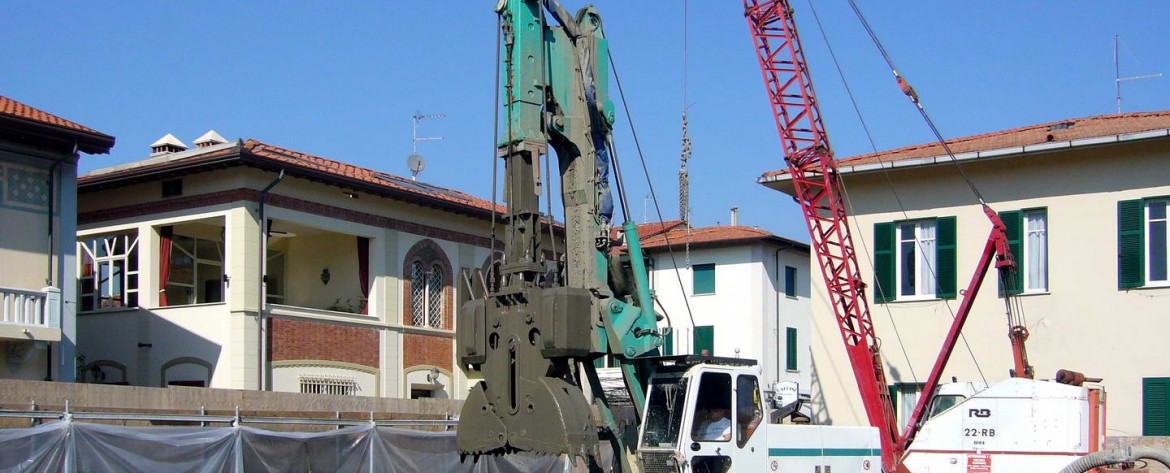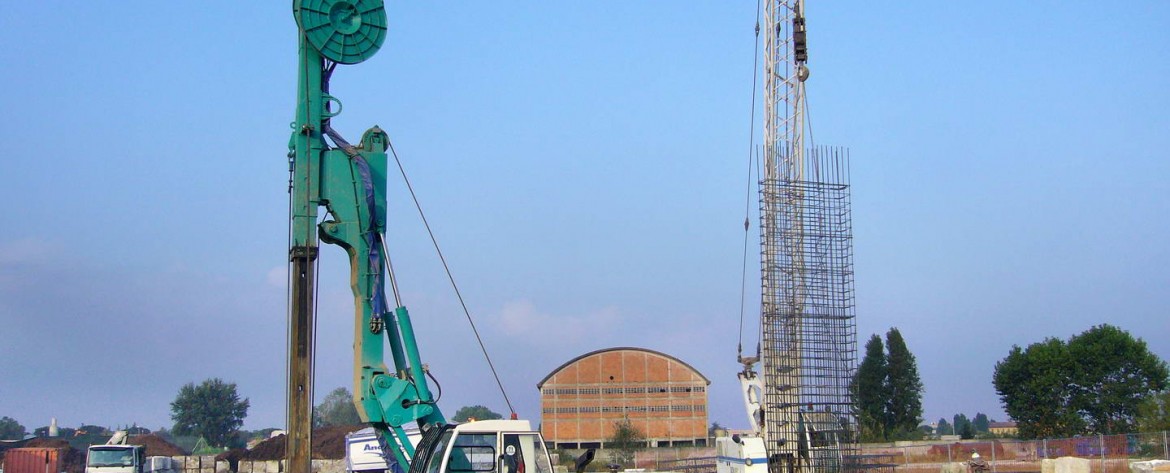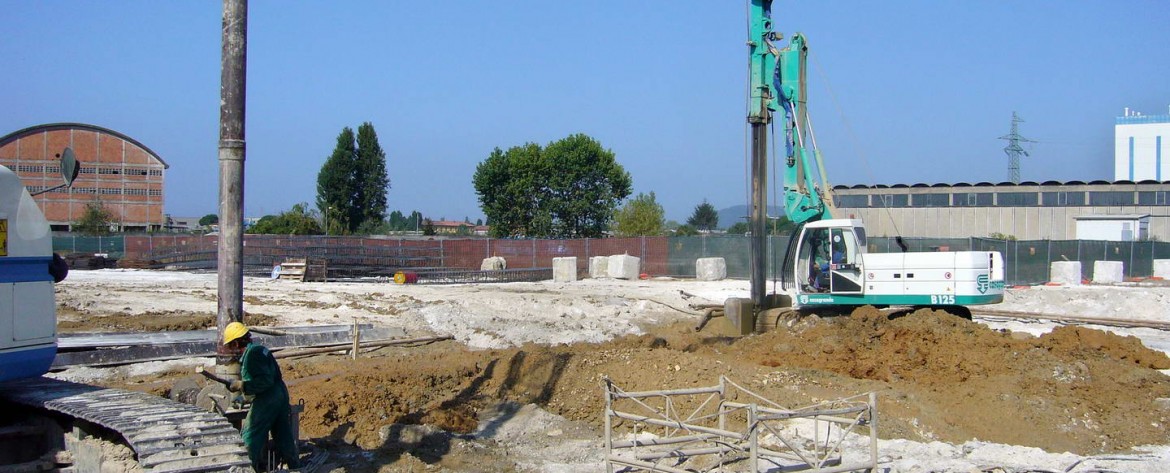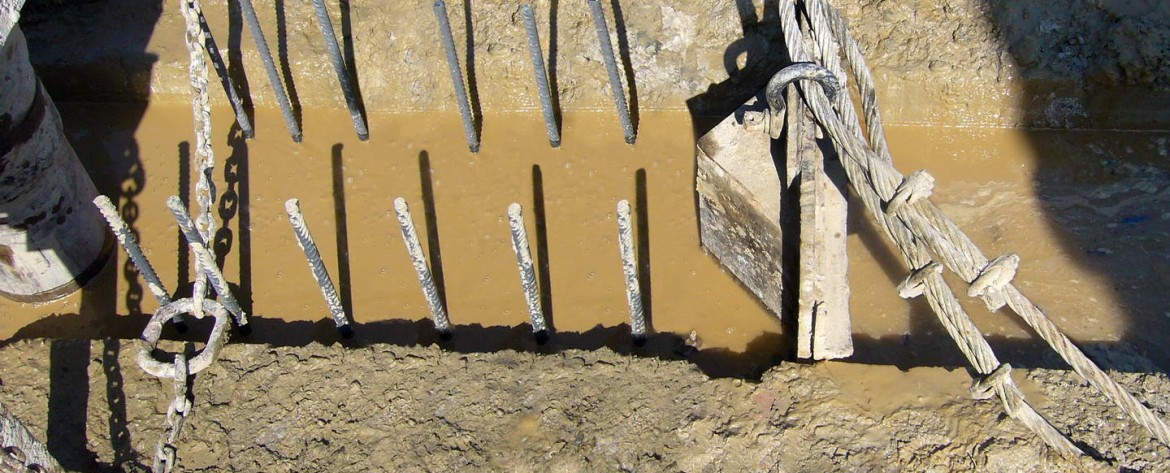DIAPHRAGM WALLS
Diaphragm walling is frequently used in civil engineering for structural and hydraulic work. These structures are made of reinforced cement panels and are principally used, either temporarily or permanently, as deep foundation elements and for excavation support. They are furthermore used as grout curtains, both as structural elements in excavation work below the ground water table and as waterproof membranes (plastic concrete diaphragms) to contain contaminated sites. Excavation work to construct diaphragm walls is similar to piledriving (soil removal by dry rotary drilling, using bentonite and / or polymers) except for the shape; rectangular in the first case and round in the second. The technique used the most is with a hydraulic grab or a telescopic Kelly bar. Alternatively with consistent soil a hydrofraise can be used. Once excavation work has been done to design depth, the metal cage is inserted and grouting is carried out with tubes starting from the bottom of the borehole working upwards to completion as with piledriving. Panel sizes can vary from 400 to 1500 mm width and up to 2500 mm length.

